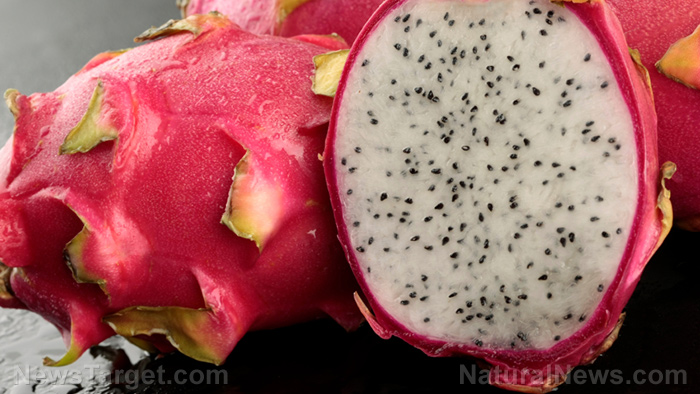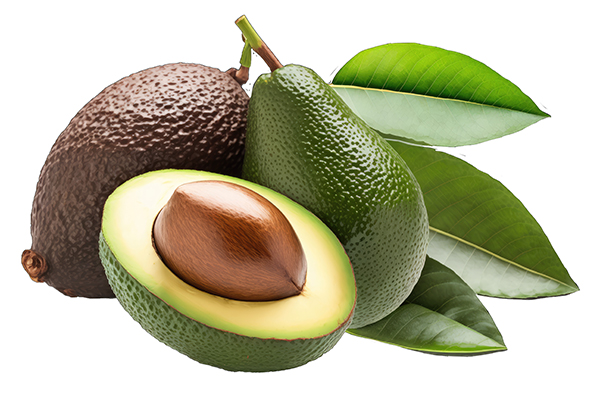
And you don't even need to steal it from a dragon's nest.
Dragon fruit facts
Dragon fruit is a tropical fruit that comes from the Hylocereus cactus or the “Honolulu Queen.” The exotic plant grows like a vine on nearby trees and rocks.
The Hylocereus cactus only opens its large, white flowers at night. The fruits start to grow on the plant after the cactus flowers.
Dragon fruit is also called pitaya, pitahaya, and strawberry pear. The fruit has bright red and leathery skin like a mythical dragon.
There are three types of dragon fruit:
- Hylocereus costaricensis or red-fleshed pitaya has red skin and flesh.
- Hylocereus undatus or white-fleshed pitaya has pink skin and white flesh.
- Hylocereus megalanthus or yellow pitaya has yellow skin and white flesh.
Dragon fruit has tiny black seeds with a nutty flavor and healthy fats. The fruit is native to Mexico and Central America, but they are currently grown commercially all around the globe.
Dragon fruit has a refreshing, subtle taste – like a cross between a kiwi and a pear. Dragon fruit with white or yellow skin tastes milder than varieties with darker pink or red skin.
Here are nine reasons to add dragon fruit to your diet.
It strengthens your immune system
The pulp of dragon fruit is full of antioxidants such as vitamin C that boosts your immune system. These antioxidants help your body fight cell damage and degenerative diseases.
It has anti-cancer properties
Dragon fruit contains hydroxycinnamates or antioxidants that can help prevent cancer. Like tomatoes, the fruit has lycopene, a potent compound with protective effects against chemical and natural toxins.
It boosts heart health
Dragon fruit is rich in flavonoids. These antioxidant pigments promote heart health. Red-fleshed dragon fruit is rich in betalains that minimize LDL (low-density lipoproteins) or "bad" cholesterol levels. Dragon fruit seeds are full of omega-3 and omega-9 fatty acids that also improve your heart health.
It boosts your digestion
The fruit is rich in high-quality fiber that is essential for digestive health. Dragon fruit contains a form of fiber that helps lower your risk of certain cancers, heart disease, and obesity. A cup of dragon fruit offers seven grams of fiber or almost one-quarter of your recommended minimum daily fiber needs. (Related: A traditional Malay ethnomedicine shown to prevent obesity.)
It's rich in prebiotics
Prebiotics nourish the beneficial bacteria in your gut. Red-fleshed dragon fruit is rich in a type of prebiotic called oligosaccharides. Studies suggest that oligosaccharides in dragon fruit help promote the growth of lactobacilli and bifidobacteria, two essential probiotics.
It helps stabilize your blood sugar
Eating dragon fruit helps maintain blood sugar balance after you consume other foods that increase your glucose levels.
It's beneficial for your skin health
Dragon fruit's vitamin C content boosts collagen production. This helps keep your skin looking smooth and healthy.
It's full of iron
A six-ounce serving of chopped dragon fruit contains 1.26 milligrams (mg) of iron. Your body needs iron to send oxygen throughout your body and organs. This essential mineral is also needed for growth, development, and metabolism. The vitamin C in dragon fruit helps enhance iron absorption, making the fruit an incredible iron-boosting superfood.
It boosts bone health
Dragon fruit contains magnesium, a mineral that's essential for maintaining a healthy skeletal system. One cup of fruit has 80 mg of magnesium, which is one-quarter of your minimum daily recommendation.
Considerations when eating dragon fruit
While dragon fruit offers several health benefits, some people may experience anaphylactic reactions after consuming the fruit. The reactions are rare, and they only occur in those who have antibodies against dragon fruit in their blood.
Dragon fruit can also cause pseudohematuria. This means if you overeat dragon fruit, your urine or stool can turn pink or reddish. This is a harmless and temporary side effect of eating the fruit.
Adding dragon fruit to your diet
Dragon fruit is a versatile ingredient. Add the fruit to chia puddings, juices, salads, smoothies, or smoothie bowls.
When buying dragon fruit, choose one with evenly red skin. Test the firmness the same way you would test an avocado by lightly squeezing it in your hand.
Prepare dragon fruit by washing it under cold water. Slice it in half with a sharp knife, then use a spoon to eat the pulp inside. You can also peel the skin off before slicing the flesh into chunks.
Dragon fruit is a unique and delicious superfood with many benefits. Add the fruit to your diet to boost your gut and heart health.
Sources include:
Please contact us for more information.























